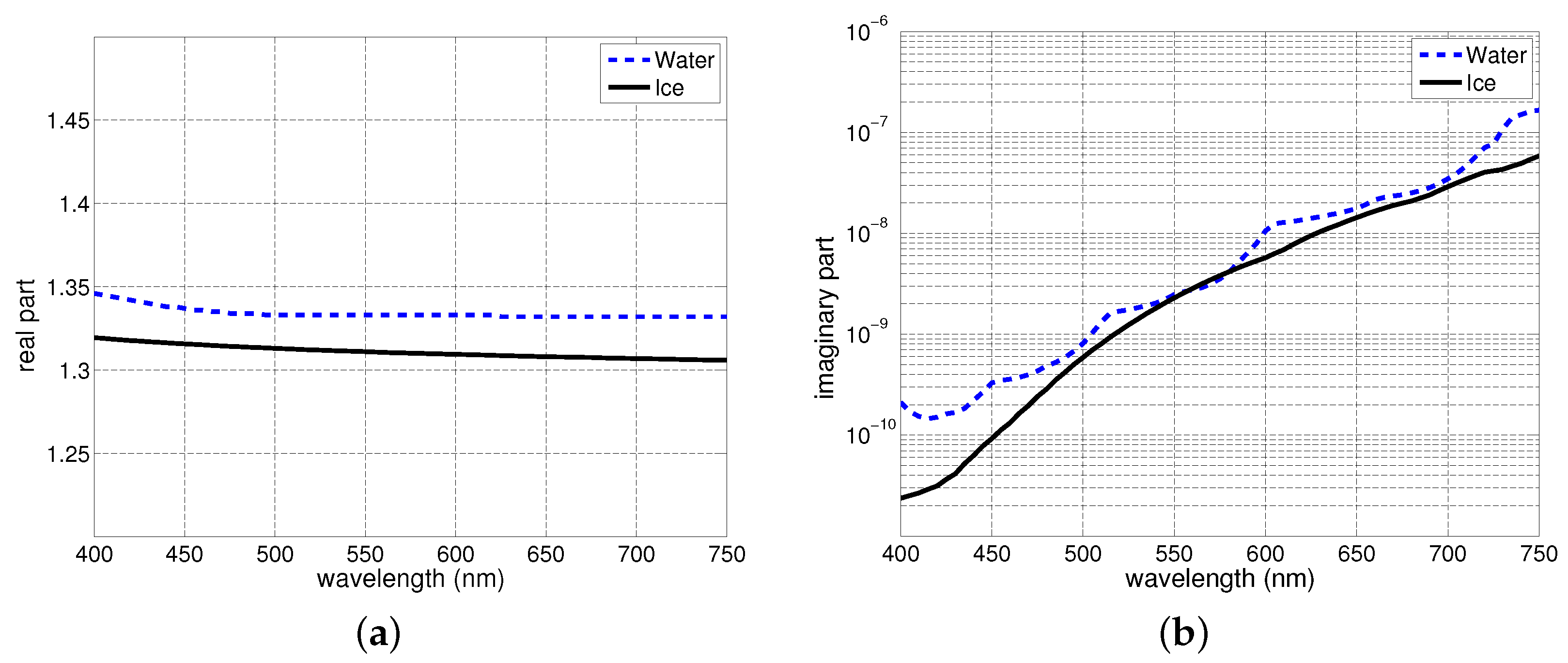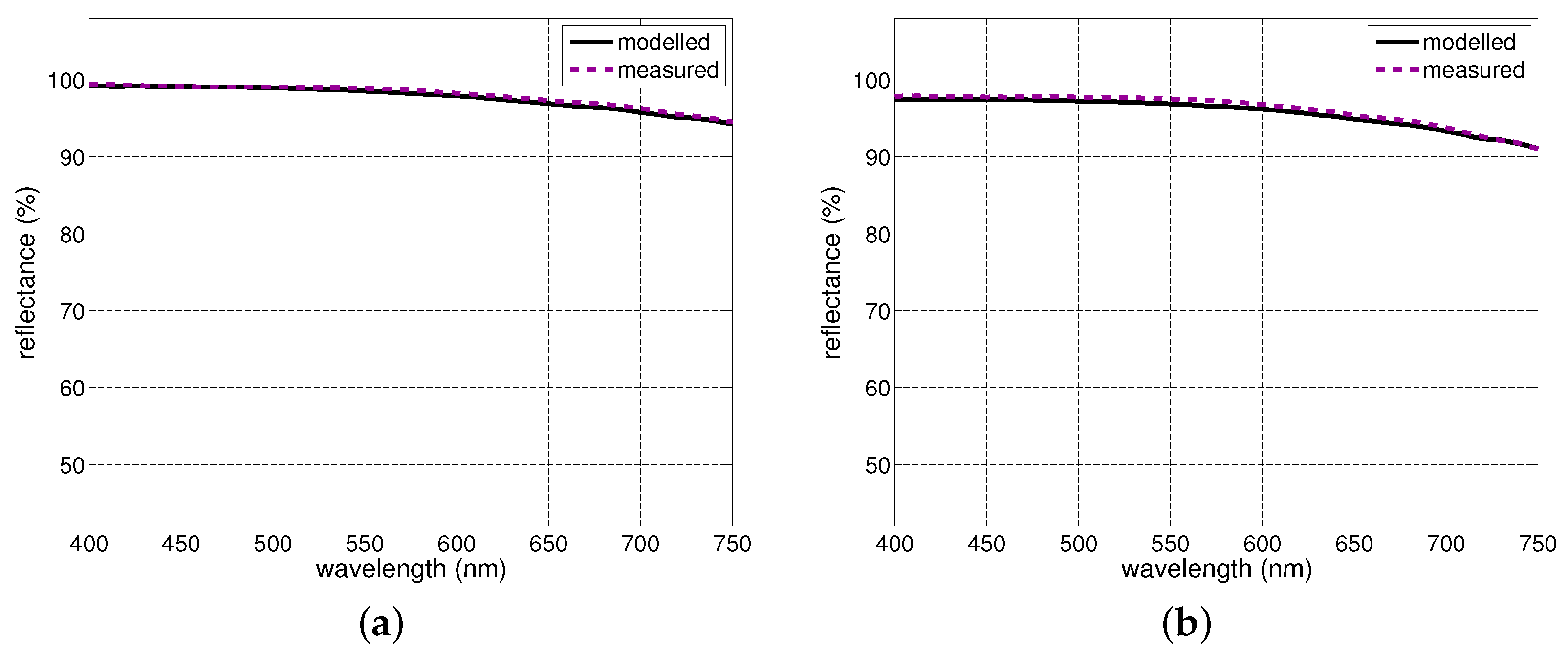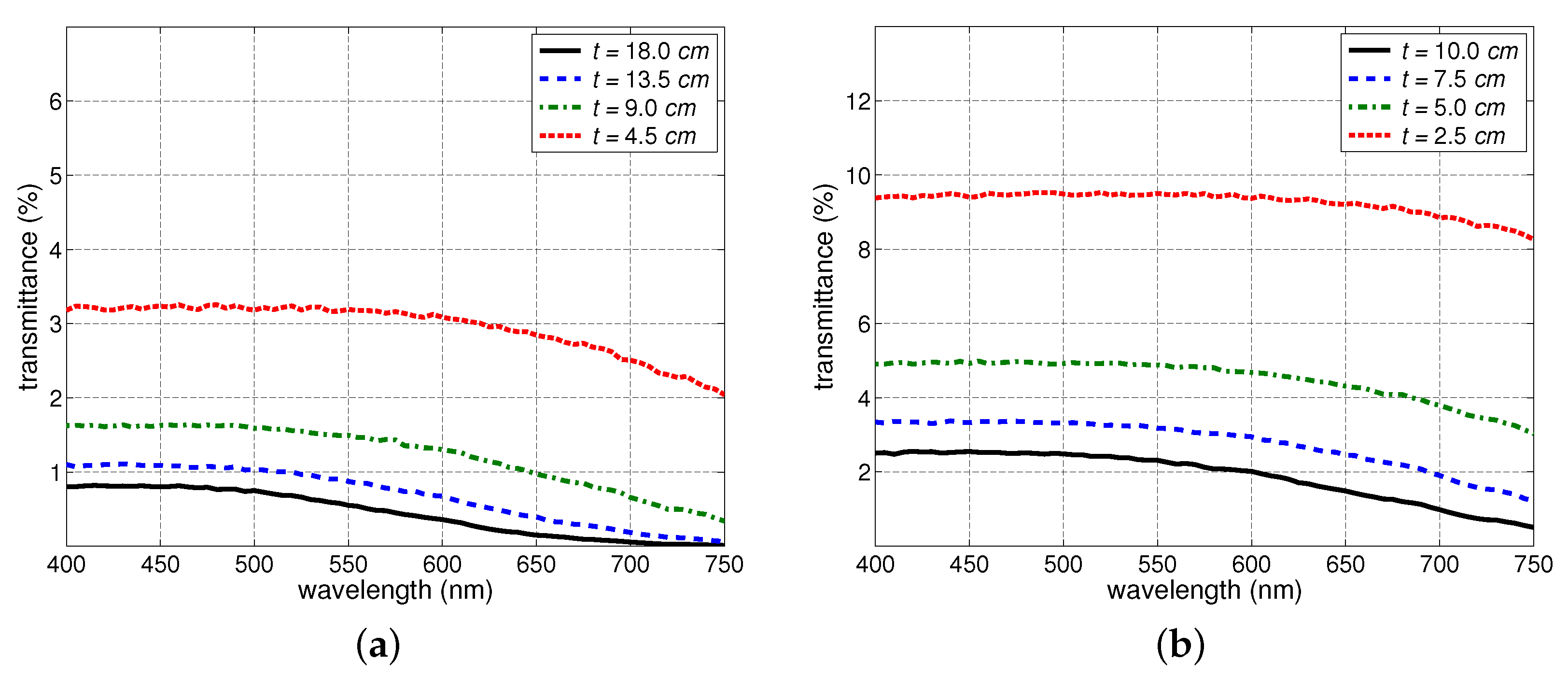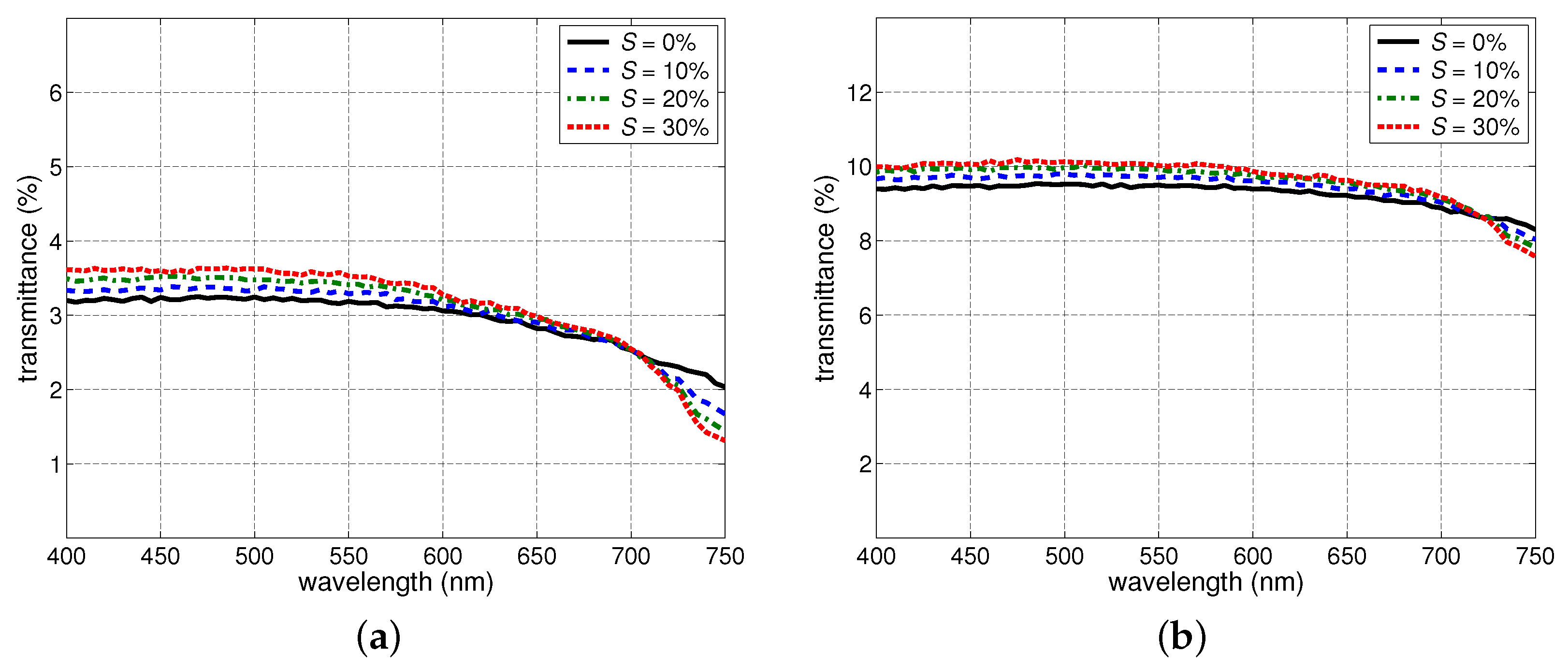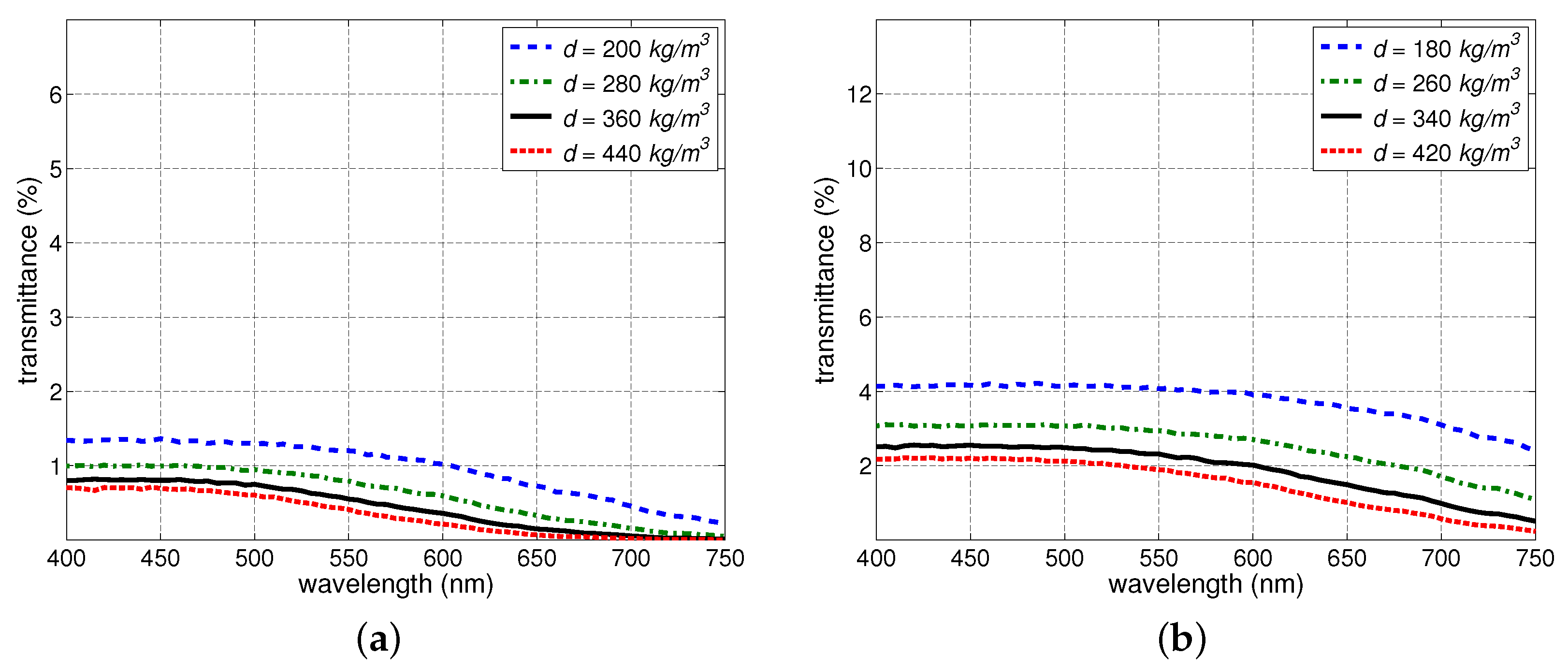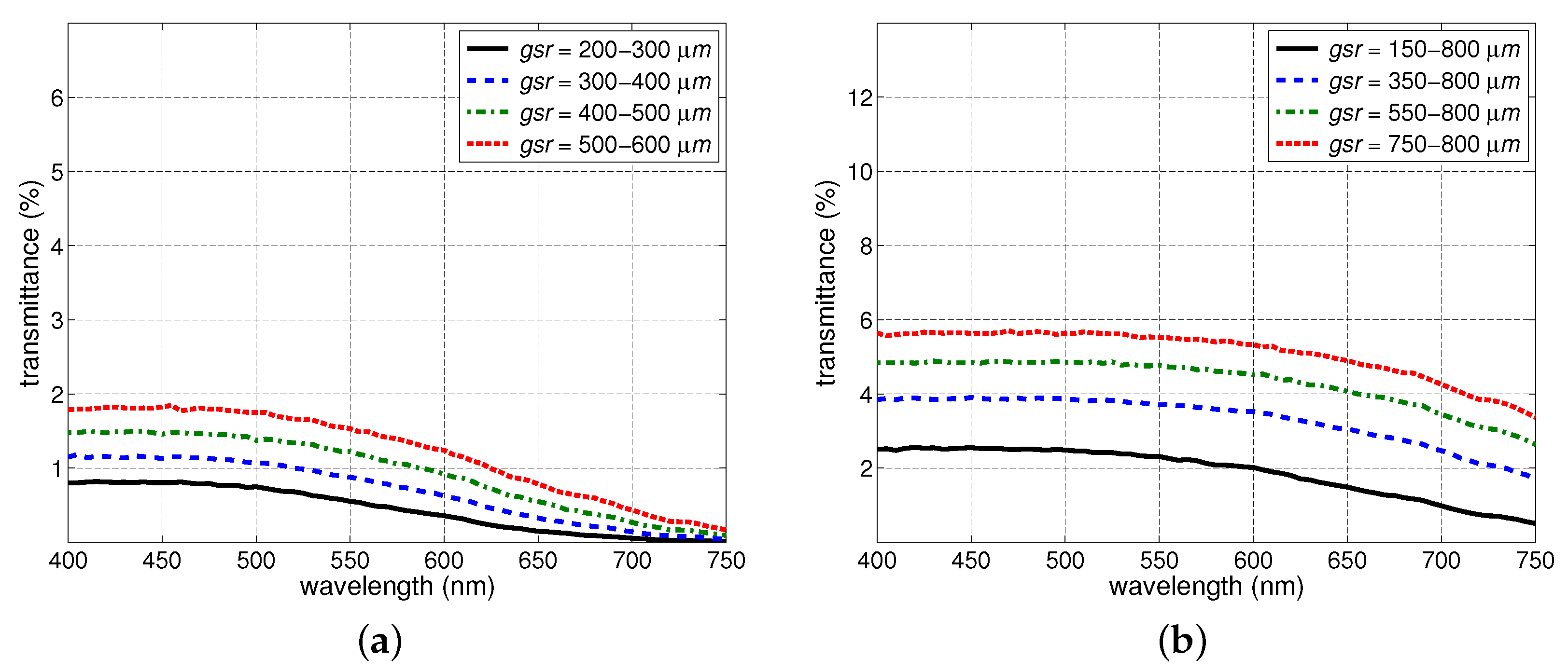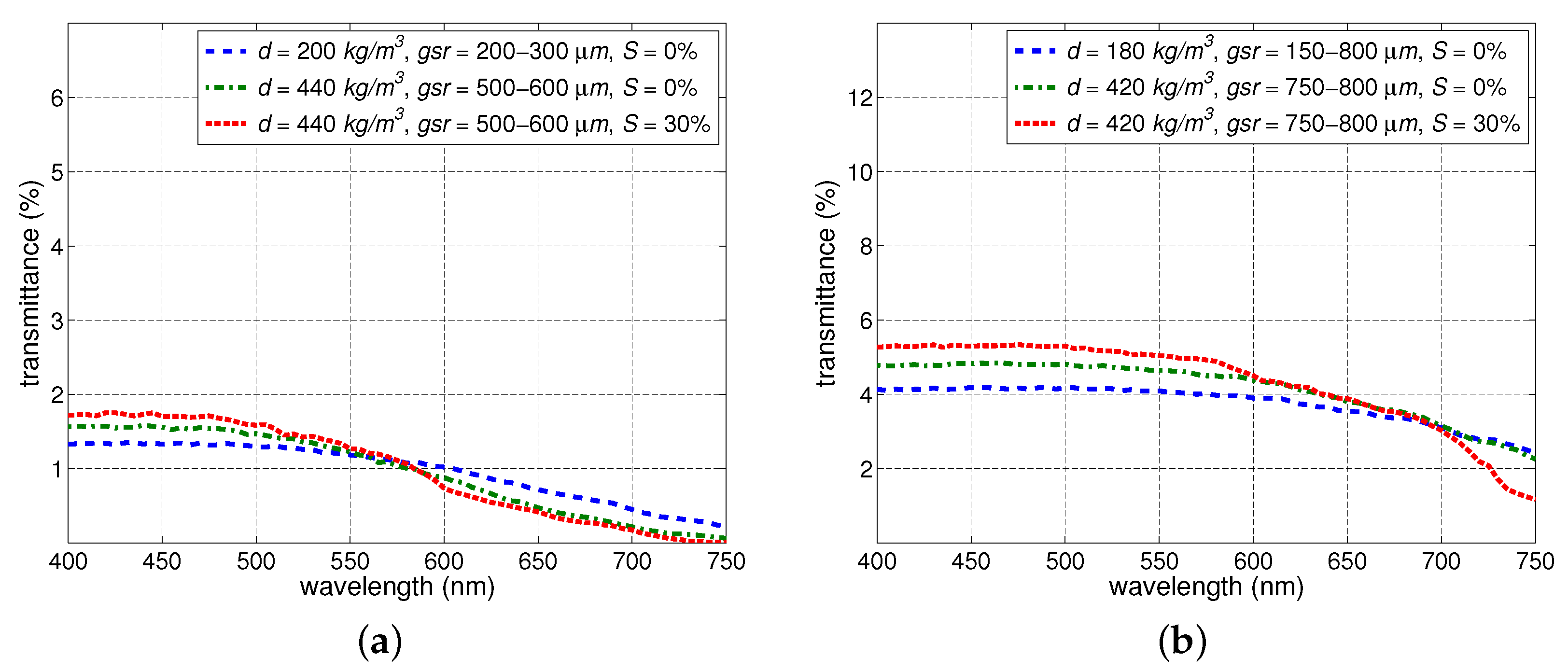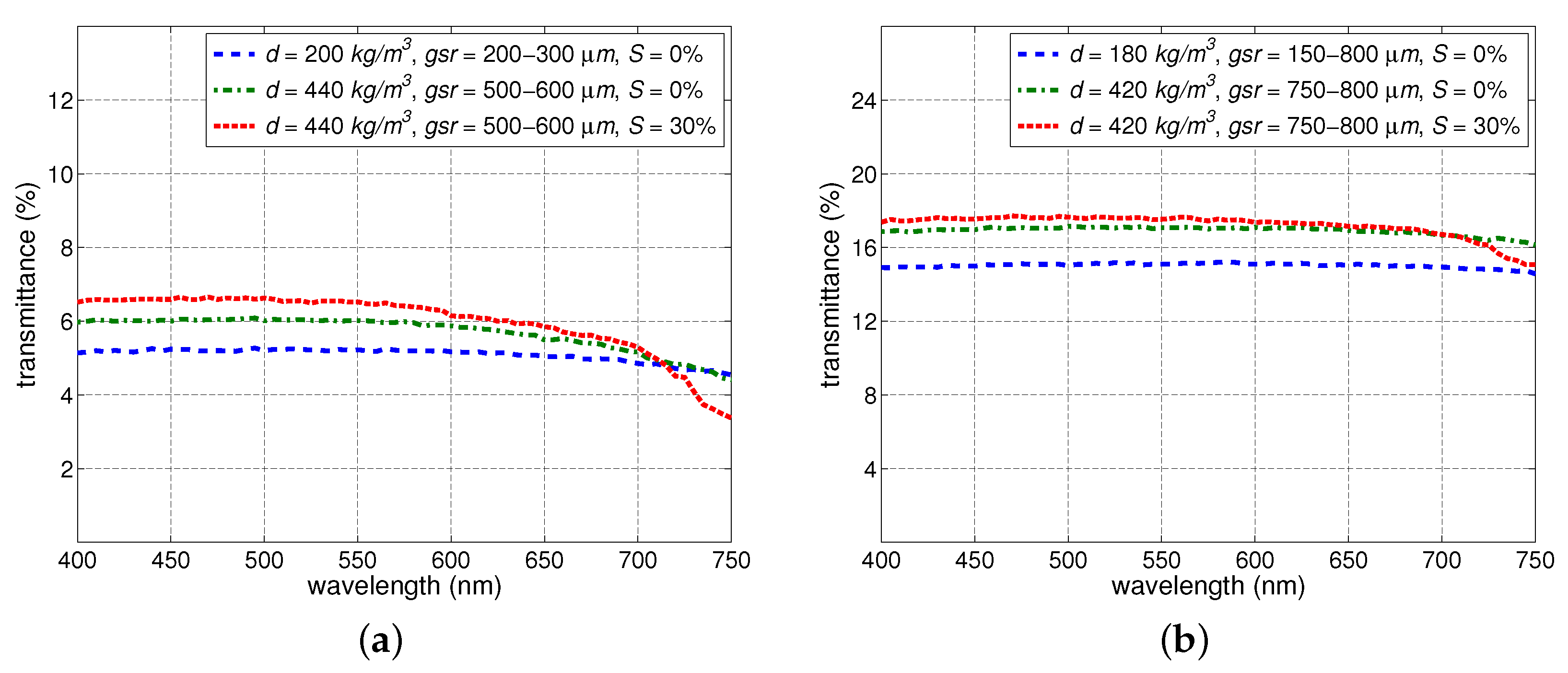1. Introduction
A substantial fraction of the Earth’s land surface is covered by snow. Besides having a major influence on the world’s radiation balance [
1,
2] and its atmosphere [
3,
4], snow represents an essential source of fresh water in different regions of the planet [
5,
6], and it is central for the sustainability of those regions’ ecosystems [
7,
8]. Accordingly, alterations in snow cover can have significant environmental ramifications [
9]. In particular, they can lead to changes in vegetation phenology [
10,
11], which, in turn, can have a considerable impact on the global climate [
6,
12]. The ecological consequences of these interconnected biophysical processes are becoming more pronounced, notably in high latitude and high altitude biomes more affected by varying warming conditions [
12,
13].
Several studies, carried out in situ or remotely, have been reporting noticeable changes in the growing patterns of plant species in the Arctic and alpine regions in North America, Europe and Asia [
6,
13,
14,
15]. Despite these notable scientific efforts, however, there is still a considerable knowledge gap regarding the effects of snow cover alterations on the vegetation of these regions [
12]. In fact, as alluded to by several research groups [
9,
12,
16,
17,
18], the subnivean ecology of plants and their interactions with the covering snowpack remain largely overlooked in the related literature and, for all practical purposes, absent from climate impact models of high latitude and high altitude vegetation.
Most research initiatives involving the aforementioned processes are primarily based on the assessment of spectral radiation reflected by the affected regions, with a relatively small number of studies also including the quantification of light transmitted through snow cover. From a standard remote sensing point of view, it is comprehensible that more attention is given to reflected light [
19,
20,
21,
22], albeit the knowledge about factors affecting the light transmitted by target materials can be particularly relevant for challenging applications such as the remote detection of relatively thin snow layers [
23,
24]. From a broader scientific perspective, however, it is necessary to make inroads toward a more comprehensive understanding of the intertwined light transport mechanisms affecting snow reflectance and transmittance [
1,
2], notably with respect to the visible (photosynthetic) spectral domain. It is widely known that photosynthetically active radiation (PAR) is critical to the plants’ growth and to the equilibrium of their hosting biomes [
16,
25]. Accordingly, advances in this area would not only benefit remote sensing applications involving snow and vegetation interactions, but also drive transformative research efforts across several fields, from ecology and climatology to hydrology and agriculture, to name just a few.
Besides its pivotal participation in photosynthesis, PAR also markedly affects a myriad of important photobiological processes such as seed germination, photoperiodism and phototropism [
8,
26,
27]. The extent of its effects on the subnivean vegetation depends not only on the amount (photon flux density or PFD [
26]) of the transmitted light, but also on its spectral quality (distribution) [
25,
28,
29]. For instance, a large number of plant species have photoblastic seeds, i.e., seeds whose germination is influenced (positively or negatively) by light [
26,
27]. Thus, PAR takes on a central photomorphogenic role by influencing the seeds’ germination timing [
30], which impacts the survival of resulting seedlings and the plants’ fitness in subsequent life stages [
26,
29]. For many of these plant species, the breaking of seed dormancy is induced by red light (from 600–700 nm) and cancelled by far-red light (from 700–750 nm) [
26].
Early field observations by Curl et al. [
28] suggested that low levels of red light beneath relatively thin snow layers may also be sufficient for promoting algal blooms in the snowpack. Later, Richardson and Salisbury [
25] postulated that the absence of red light or far-red light under thick snowpacks and their reappearance under thin snow layers could represent signals for regulating the development of lower and higher plants. It has also been suggested [
18] that the low red to far-red ratio of transmitted light could suppress the emergence of plant organs under unfavourable temperature conditions. Conversely, high red to far-red ratios could stimulate their emergence under favourable conditions. This putative phenomenon would be similar to shade avoidance responses (e.g., petiole and internode elongation with the purpose of increasing light capture) also elicited by variations in the red to far-red ratios of radiation impinging on higher plants [
27,
31,
32].
Recently, experiments by Kameniarová et al. [
33] indicated that blue light (400–500 nm) can markedly contribute to the activation of cold tolerance and acclimation responses of plants. This aspect is consistent with previous empirical observations reporting that chlorophyll is synthesized under snow, and blue light increases its production [
25,
34]. Incidentally, this essential component of the photosynthesis process has its bands of absorption maxima located within the blue and red regions, and its band of absorption minima located within the green (500–600 nm) region of the light spectrum [
35].
The scarcity of comprehensive studies on the effects of the environmentally induced variations on the spectral quality of PAR transmitted through snow cover may be explained by the intrinsic limitations of in situ measurements. For instance, while attempting to place sensors within a snow layer, one may inadvertently disturb the structure of the snowpack [
2,
17,
18], which may affect the measurements’ reliability. Also, systematic investigations usually require specific variations in selected snow-specifying (nivological) characteristics while the others are kept fixed. Such a control is difficult to be achieved under field conditions in which the changes are elicited by environmental factors that may affect multiple nivological characteristics of the snowpack simultaneously. While such controlled experiments can be attempted under laboratory conditions, usually artificially prepared snow samples lack the morphological diversity (e.g., different grain sizes and shapes) found in natural samples [
36], which limits the scope of the observations that can be derived from their outcomes. Moreover, experiments involving light transmission on scattering materials, conducted under field or laboratory conditions, have to face another challenging aspect, namely the control of incident illumination [
1].
In this work, we systematically examine the impact that climate-elicited alterations in key morphological characteristics of snowpacks can have on the spectral quality of the transmitted PAR. More specifically, we focus on thickness (depth), density, grain size and saturation (fraction of the medium, or pore space, surrounding the snow grains occupied by water) alterations brought about by snow metamorphic processes (melting and settling) [
16,
28,
37]. To overcome the technical constraints outlined earlier, we conducted controlled computational (in silico) experiments using a first-principles model for light interactions with snow, known as SPLITSnow (
SPectral
LIght
Transport in
Snow) [
38]. It stochastically accounts for the complex structure of snow in order to output high-fidelity radiometric data (e.g., spectral reflectance and transmittance) for different illumination geometries.
The employed in silico investigation approach is grounded on measured radiometric and nivological data obtained for real snowpacks located in the Arctic [
36]. We note that this is the region most affected by climate change effects, with a warming rate more accentuated than the global warming rate [
12,
39]. Moreover, this region is less prone to the presence of impurities (e.g., black carbon particles originating from human activities and industrial processes) that can significantly alter the absorption of light within a snowpack [
2,
16,
25,
40]. Thus, our choice of reference data also aimed to mitigate the introduction of undue biases in our present investigation focused on the transmittance of snow in its natural, uncontaminated state.
The outcomes of our investigation are expected to strengthen the knowledge foundation required for the effective interpretation of in situ and remote observations of biomes severely affected by snow cover alteration, and for the design of more robust climate impact models for those biomes [
12,
13]. Furthermore, although a number of works have examined how the transmittance of a snowpack is affected by changes in its nivological characteristics [
2,
18,
25,
28,
33,
37,
40], there are aspects related to the role played by alterations in key snow parameters, such as density, that needed to be rectified. In this work, we also address these issues. Hence, the qualitative and quantitative observations derived from our findings also provide fundamental elements to be incorporated into broader interdisciplinary studies and remote sensing applications involving the ecological implications of snow and vegetation interactions [
6,
7,
15] and their connections with global warming [
9,
12,
14].
4. Discussion
Despite the important connections between environmentally induced alterations in snow PAR transmission profiles and changes in subnivean vegetation, which can lead to pivotal feedback effects [
12,
78] on the planet’s climate patterns and on the sustainability of its ecosystems [
6,
13], there is a noticeable paucity of measured transmittance data to support comprehensive studies in this area. Such studies are needed to further the current understanding about the impact of snow cover alterations on vegetation [
9,
12,
15]. Thus, to systematically examine those connections while coping with measured data constraints, we employed an in silico experimental approach and used available reflectance measurements for snow to establish baseline references (
Section 3.1) for our investigation.
Initially, we methodically examined the effects of independent changes in snow thickness, saturation, density and grain size (
Section 3.2). The transmittance changes specifically elicited by each of these snow characteristics were consistent with empirically-based observations reported in related works on light interactions with granular materials. In concise terms, the reduction in thickness led to a nonlinear transmittance increase, the increase in saturation led to a transmittance increase in the lower end of the PAR spectrum and an increase in the upper end, the increase in density led to a transmittance decrease, and the increase in grain size led a transmittance increase.
As mentioned in
Section 2.1, we have considered as references two snow samples with distinct characteristics in our investigation. It may be argued, that the use of a larger number of snow samples can lead to quantitative variations in our observations, i.e., transmittance curves with distinct magnitudes. However, we remark that our focus was on qualitative trends. These are likely to be preserved since the employed samples have typical characterizations. In fact, as mentioned earlier, our observations were consistent with trends empirically verified for snow and other granular materials with distinct characteristics. Nonetheless, there is certainly room for the future extension of our investigation to samples characterized by more significant variations from the norm such as those containing noticeable amounts of impurities.
It is also worth noting that density plays a particularly relevant role in environmental studies involving the effects of snow cover variations in subnivean vegetation and soil [
16,
79], as well as in estimations of SWE (snow water equivalent) quantities [
22]. Our findings indicate that an independent increase in the density of a snowpack leads to a decrease in its PAR transmittance. Although this relationship is consistent with empirically-based observations reported in the literature (
Section 3.2.3), it has been stated in a number of publications [
17,
18,
25,
28] that transmittance of a snowpack increases with increased density. Incidentally, none of those works carried actual controlled experiments on the independent effects of density changes on snowpack’s transmittance.
The explanation for this apparent divergence lies on how the field observations reported in the seminal work by Gerdel [
37] have been interpreted and cited in those subsequent publications. For instance, Robson and Aphalo [
18] stated that snow transmittance increases with increased density citing the work by Richardson and Salisburry [
25], while Saarinen et al. [
17] mentioned the same transmittance-density relationship citing the work of Curl et al. [
28]. Richardson and Salisburry [
25], in turn, cited the works by Curl et al. [
28] and Gerdel [
37] when they mention rises in light transmission through a snowpack following increases in its density, while Curl et al. [
28] themselves cited the work of Gerdel [
37] when they made the same statement.
Upon a closer examination of Gerdel’s field observations [
37], a few elucidative aspects stand out. First, his measurements did not include spectral distributions. Instead, they corresponded to the total amount of radiance from 250 to 3000 nm penetrating the snowpack. Second, indeed Gerdel [
37] initially mentioned that the amount of transmitted radiation increases with increase density. However, while describing his experiments in more detail, he also reported that the increase in density was accompanied by a substantial increase in grain size and, in some measurement instances, it was also accompanied by an increase in the percentage of free water (associated with the snowpack’s saturation level). More recently, Perovich [
2] suggested that density might have been just a proxy for other snow characteristics, notably grain size, in previous investigations of its relationship with snow optical properties.
We remark that the outcomes of our Phase III experiments (
Section 3.3) showed that a concomitant increase in density and grain size can lead to a transmittance increase in the PAR spectral domain, and such an increase can be further affected by the presence of water in the samples’ pore space. Hence, as indicated by our density related findings, presented in
Section 3.2.3 and
Section 3.3, the effects of density changes on the snow transmittance may vary depending whether or not these changes are accompanied by significant alterations in the other key nivological characteristics, namely, grain size, saturation and thickness.
The data scarcity issue highlighted earlier is even more severe with respect to the spectral distribution of the transmitted PAR and its quantification in terms of photobiologically relevant spectral ratios, notably
,
and
. The extent of the impact of individual or combined changes in snow characteristics on these ratios have not been examined in the related literature to date. In our investigation, we specifically aimed to address this knowledge gap. Recall that, as snow melting and settling processes take place, the thickness of a snowpack decreases, while its saturation, density and grains’ size range increase [
28,
37]. Accordingly, we were particularly interested in these environmentally elicited changes to the examined nivological characteristics.
The outcomes of our Phase II experiments involving independent changes in the samples’ nivological characteristics (
Section 3.2) brought out definite trends, which are concisely depicted in
Table 9. More explicitly, while thickness reductions and grain size increases led to increases in the
ratio and decreases in the
and
ratios, the increases in saturation and density led to opposite effects on these ratios. Moreover, changes in a specific parameter leading to an increase in the
ratio were accompanied by a decrease in the corresponding
and
ratios, and vice-versa. We note that these trends were observed for both snow samples.
Recall that variations in the
,
and
ratios may act as signals to prompt the activation and/or accentuation of biophysical processes that can directly affect the development of subnivean vegetation (
Section 1). These interconnected photobiological mechanisms include the rise in chlorophyll production associated with decreases in the
ratios [
25,
34], the breaking of seed dormancy and the emergence of plant organs associated with increases in the
ratios [
18,
26], as well as the reduction of cold tolerance and acclimation responses associated with decreases in the
ratios [
25,
33]. Hence, our findings suggest that, although thinner snowpacks and snowpacks formed by larger grains are more likely to provide more favourable conditions for the growth of subnivean vegetation, they are less likely to contribute to the gemination of subnivean seeds and the emergence of subnivean plants organs sensitive to increases in the
ratios. On the other hand, denser snowpacks and wet snowpacks are likely to have the opposite effects on subnivean vegetation.
As previously noted (
Section 2.2.2), the changes in the examined nivological characteristics are likely to occur concomitantly as a snowpack undergoes melting and settling processes. The outcomes of our Phase III experiments (
Section 3.3), in which we considered this possibility, also brought out definite trends summarized in
Table 10. More specifically, a thickness reduction accompanied by an increase in saturation, density and grain size is likely to lead to the decrease of the
ratios and the increase of the
and
ratios. Again, these trends were observed for both snow samples. Hence, our findings also suggest that, as snow metamorphic processes take place, the PAR traversing a snowpack is more likely to accentuate the production of chlorophyll as well as the cold tolerance and acclimation responses of subnivean plants. It may also promote the germination of photoblastic seeds and the emergence of plant organs, particularly those belonging to subnivean species sensitive to increases in the
ratios. Hence, our findings are aligned with recently reported observations on increasing vegetation productivity, or greening [
7,
13], following snow cover recession, notably in high latitude and high altitude regions more susceptible to climate warming effects on snow melting and settling processes [
12,
14].
We note that the greening phenomenon has been the object of a wide gamut of interdisciplinary studies supported by field and remote sensing observations [
6,
9,
13,
14,
15,
78]. Besides being driven by environmental factors and significantly affecting local biomes, it can also result in cause–effect loops with a direct impact on global climate and ecology [
6,
12]. For instance, the greening elicited by snow cover reduction accentuates radiation exchanges, leading to faster snowmelt and reduced snow cover, which, in turn, not only continues to increase greening, but also reduces the amount of melt water available for the plants during their growing stages [
13,
14]. Hence, at a critical, tipping point, vegetation productivity can decrease, negatively impairing the biodiversity of the affected regions, which may experience accelerated rates of extinction for local species [
12]. Such a decrease in vegetation productivity can also negatively reinforce climate changes by reducing the landscapes’ reflectance (albedo) and subsurface thermal insulation [
13,
15].
To effectively tackle the complexity of these scenarios and their climatological and ecological ramifications, it is necessary to further the current understanding about the underlying photobiological mechanisms of those fundamental processes. Viewed in this context, the in silico experimental framework employed in this investigation can also be seen as a predictive platform to be used to complement in situ and remote observations and, consequently, expedite the hypothesis generation and validation cycles of future research initiatives on this timely and far-reaching scientific topic.
5. Conclusions
In this investigation, we conducted controlled in silico experiments to systematically examine the impact that environmentally elicited changes in key snow characteristics, namely thickness, saturation, density and grain size, can have on the spectral quality of transmitted PAR, quantified in terms of , and spectral ratios. Our findings brought out specific trends associated with independent and concomitant changes in the examined nivological characteristics. In particular, they indicate that, while an increase in density accompanied by an increase in grain size can lead to a transmittance increase, an increase in density alone results in a transmittance decrease. These different behaviours have been overlooked in the related literature.
Our findings also suggest that the concomitant changes in snow thickness, saturation, density and grain size that take place during snow melting and settling processes affect the examined spectral ratios associated with the transmitted PAR. Furthermore, the net effect of their influence in the spectral quality of the transmitted PAR tends to favour an increase in the productivity of subnivean vegetation. More specifically, the outcomes of in silico experiments provide tangible elements that can be incorporated into large scale studies, involving both field and remote observations, on the feedback effects of greening in the ecology of high latitude and high altitude regions, more affected by increasing warming conditions, and in the global climate. As future work, we plan to extend our investigation to snow-vegetation interactions occurring in regions more exposed to climate altering factors prompted by human activities such as the burning of fossil fuels and industrial pollution. We also believe to be worthwhile to explore the ramifications of our investigation from a distinct perspective involving the calculation of indices such as SWE.
As any in silico investigation, the outcomes of this work are still subject to in situ confirmation as measured hyperspectral transmittance data for snow becomes available. We remark that the use of a predictive first-principles in silico framework was also prompted by the scarcity of measured snow transmittance data. This brings out an important issue, the need not only for more measured data, but also for data of good quality, i.e., radiometric data with a fine spectral resolution, properly measured (e.g., with negligible disturbances to the snowpack) and accompanied by a detailed description of the target snowpack and the measurement conditions. We believe that the pairing of data obtained through in situ experiments and remote sensing observations with in silico data obtained through high-fidelity simulations can be instrumental for advancing the current knowledge about snow and vegetation interactions. This, in turn, is essential for increasing the effectiveness of procedures and technologies aimed at the monitoring and management of adverse climate effects on the planet’s ecological sustainability.
